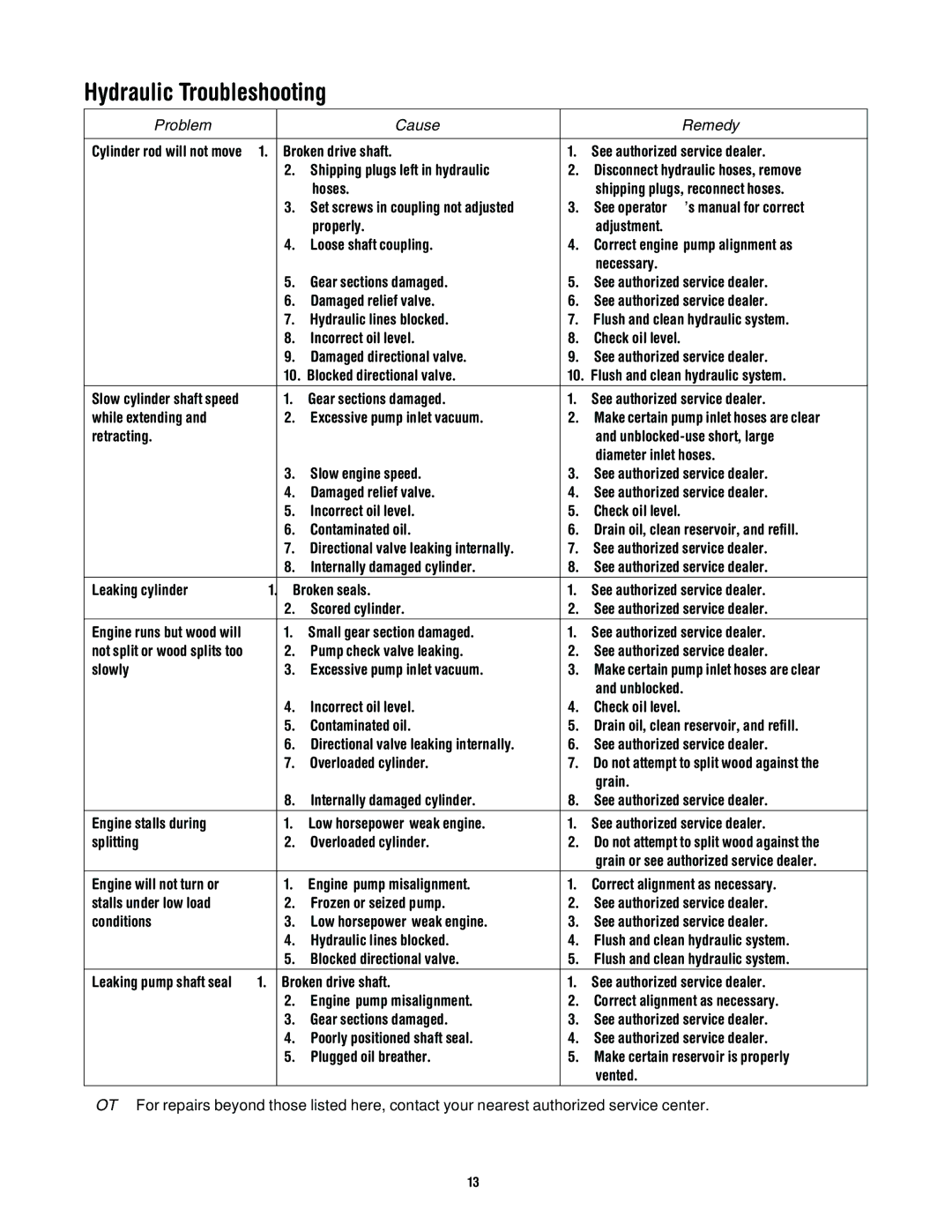LS275 specifications
The Troy-Bilt LS275 is a versatile and efficient rear-tine tiller designed to make gardening and landscaping tasks more manageable. This machine is particularly suited for homeowners with larger gardens who require reliable tilling and soil preparation capabilities.One of the standout features of the LS275 is its powerful engine. Equipped with a 208cc OHV engine, this tiller offers ample power for breaking up tough soil, ensuring that you can tackle even the most challenging garden plots. Its reliable starting system allows users to get to work quickly, minimizing downtime.
A key aspect of the LS275 is its rear-tine design, which provides stability and allows for deeper tilling. This configuration offers improved control and maneuverability, particularly in tight spaces or when working in uneven terrain. The tilling width of 18 inches is ideal for typical garden sizes, while the adjustable tilling depth, ranging from 3 to 7 inches, enables users to customize the tilling process according to specific garden needs.
The Troy-Bilt LS275 is designed with user comfort and convenience in mind. Its adjustable handle can be tailored to suit users of varying heights, reducing strain during extended use. The lightweight construction, combined with the counter-rotating tines, ensures that the tiller can glide through the soil with ease, allowing for efficient operation and less fatigue.
The tines themselves are made from durable materials that are built to withstand the rigors of tough soil conditions. The counter-rotating action of the tines helps to break up hard-packed soil and incorporates organic matter effectively, contributing to healthier garden beds.
Another notable feature of the LS275 is its robust 6-inch rear wheels. These provide excellent traction and stability, making it easier to maneuver across different terrains while maintaining control over tilling depth and width.
Safety is also a priority with the LS275, featuring an easy-access throttle control and a safety guard that helps protect the user from debris.
Overall, the Troy-Bilt LS275 stands out for its power, efficiency, and user-friendly features, making it a great choice for both novice and experienced gardeners looking to optimize their soil preparation efforts. With its combination of reliability and performance, this tiller can help transform any garden into a thriving, productive space.
